Sorting out the ethical aspects? A discussion article on filming in healthcare institutions
Where should the line be drawn in NRK’s programme Helene sjekker inn på hospice between producing good television and providing sound, responsible health care?
The Norwegian Broadcasting Corporation (NRK) has achieved wide success with documentary series such as Helene sjekker inn (Helene checks in), Jeg mot meg (I versus me) and Sinnssykt (Mentally ill). Here viewers gain an understanding of real people’s experiences with illness.
As healthcare researchers, we are interested in patients’ subjective experiences, but we are also very familiar with all the research ethics barriers that must be overcome in order to gain access to patients. We are interested, therefore, in how the NRK goes about obtaining permission from institutions, healthcare personnel and patients.
What ethical assessments do managers and healthcare personnel perform when it comes to participation in the series? What ethical challenges are discussed? How, and with whom? What is the basis for decisions on whether the institution should participate or not?
We use the episode Helene sjekker inn på hospice (Helene checks into a hospice) as a starting point for a much-needed discussion on the ethical aspects of journalists’ access rights, openness and freedom of speech juxtaposed with healthcare personnel’s duty to protect patients’ privacy and integrity.
Helene sjekker inn represents an ethical balancing act
The NRK has itself described Helene sjekker inn as an ethical balancing act with ‘many complex ethical discussions and decisions where we must try to find the right balance between caution, dignity and openness’ (1). According to the NRK, ‘the ethical aspects have been sorted out, and the journalist can be certain that ‘she [journalist Helene Sandvig] is not exceeding the limits’ (2).
We do not think it is that simple. On the contrary, we believe that there is every reason to discuss why and how (gravely) ill patients, often in a healthcare institution and in vulnerable life situations, are invited to open up and put themselves on display for the whole of Norway. This discussion particularly concerns healthcare personnel, who often facilitate access to institutions and patients.
In Helene sjekker inn, healthcare personnel play a prominent role in front of the camera, and the individual episodes could also not have been created without their advice, goodwill and help behind the camera and behind the scenes. This episode brings several ethical issues to the fore because the patients are extremely ill. In this article, we highlight some of these issues and discuss them.
The NRK undertakes the groundwork without Sandvig
Journalist Helene Sandvig has checked into a reception centre for asylum seekers, a neonatal intensive care unit and a women’s prison to investigate what it is like to live and work there. Viewing figures have been high throughout the series’ six-season run.
According to the NRK, the production team undertakes thorough groundwork before the episodes are filmed, not least in order to inform and reassure the institution’s management and staff, and to reach agreement about suitable participants. Sandvig does not take part in these preparations. When she arrives at the institution, she is supposed to ask simple, spontaneous and direct questions on things that both she and the viewers are curious about, which would be impossible ‘if she knows too much’ (3).
A patient dies in front of the camera
In the hospice episode, which was broadcast in December 2018, we meet four patients who are seriously ill with cancer, including Dag, as well as a doctor and a registered nurse. The episode was filmed in the winter of 2018. We know from the end credits that all four patients died during the spring. The episode consists of an edited selection of scenes, situations and conversations – a representation of reality (4).
We know from the end credits that all four patients died during the spring.
In this episode, Dag represents people who die in a hospice. He looks pale and ill and is struggling to breathe. Sandvig and a film camera are there with Dag while he has a telephone conversation with his son. We understand from the conversation that the two did not have much contact when his son was growing up. A Spanish-speaking nurse calls Dag’s wife, who lives in the Dominican Republic, to explain the situation. Dag has a few words with his wife before the conversation ends. He weeps silently.
When Sandvig’s stay is coming to a close, she goes into Dag’s room to say goodbye, but also to ask him a question: ‘[…] and will you let me come back and follow you up to the moment of death?’. ‘Yes,’ Dag answers ‘I see no reason why not. It will maybe be useful for someone.’
After a period of time, Sandvig is back in the ward. Through the film camera, we see a dying Dag with Sandvig and a nurse in the room. When Dag dies three days later, there is no one there, however. Only the film camera captures the moment of death.
We are experiencing new openness about health and illness
Today, being open about illness is a normative ideal (5). ‘The ethos of openness’ (6) is a patient’s moral responsibility to come forward for others as well as yourself because openness can lead to personal growth. People who reveal their medical history in the media are described as idealists who want to promote openness and spread knowledge, receive validation and get support, especially from others in the same situation. At the same time, openness is regarded as a balancing act between sharing and holding back (7).
The participants’ personal narratives about their health and life situations as well as living with multiple diagnoses can be understood as ‘human interest stories’ (6). A personal narrative creates interest and adds ‘a human face or an emotional angle to the presentation of an event, issue, or problem’ (8, p. 95).
In other words, personal experiences are valuable. They represent a kind of human capital that can be used in different media and for different purposes. We can talk about ‘a human interest economy’ (6). This ‘economy’ is in play when journalists’ justification for providing insight into patients’ experiences of illness is that it promotes greater understanding, persuades others to seek help, and breaks down prejudices and taboos ‘through openness and human encounters’ (3).
The NRK regards it as part of its social mission to contribute to ‘the new openness’.
The NRK regards it as part of its social mission to contribute to ‘the new openness’ (9) and the education of the public by presenting a number of documentary series (10). This has resulted in public debate about exposing vulnerable participants, consent and the duty of confidentiality (11).
A recent research project on health, the media and power (12) has generated important knowledge about such topics as the experiences of participants who reveal their illness in TV documentaries. While some describe this as a meaningful experience, others describe a feeling of ambivalence, a lack of control and an alienating representation (13, 14).
The NRK uses trust as a method
Patients who are invited to take part in Helene sjekker inn, decide themselves whether to participate or not. The right of legally competent adults – and patients – to decide over themselves and their lives, referred to as the principle of legality, is a basic tenet of modern society (15).
In medical and healthcare research, the right to self-determination is reflected in the absolute requirement for consent. Consent must be informed, specific, explicit, voluntary and documented – and it can be withdrawn without any reason being given (16).
According to the NRK, trust is an essential prerequisite for patients consenting to participate, and the broadcaster therefore spends considerable time informing patients and gaining the trust of both patients and staff. In other words, trust is the method used (3).
A close relationship of trust makes it difficult to say no
The NRK also assesses who is best suited to appear on TV (6). We do not know why Dag was asked, but we believe that he had spent quite a long time at the hospice. This may mean that the staff and the NRK had got to know Dag well, and vice versa. This may be the reason for inviting Dag to take part, but it can also make it difficult for him to say no.
Healthcare research emphasises that the person who invites a patient to take part in a study should not be someone with whom the patient has a therapeutic relationship or any other kind of dependency. The invitation must be given by a third party to avoid a conflict of loyalties and to ensure that to the greatest extent possible, consent is voluntary.
Perhaps the existence of a relationship of trust should disqualify the person in question from making such a request because this may influence the answer.
Seen against this backdrop, it is clear that it is ethically relevant who informs patients and invites them to participate in a TV production. Perhaps the existence of a relationship of trust should disqualify the person in question from making such a request because this may influence the answer.
Perhaps the participants do not understand the consequences of their participation
Valid consent must include comprehension and intention. Dag’s intention is that when Sandvig follows him to the moment of death, it might be useful for someone. Perhaps he wants to promote openness and knowledge, (7) or to break down prejudices (2), or he finds it meaningful to contribute his own experience (17).
Dag is very ill, and the NRK must have been fully aware of the fact that they cannot promise him ‘adequate time for dialogue afterwards’, ‘ownership’ of his story or that he will see the completed episode (2). The NRK normally applies such a policy to ensure that participants accept how they are portrayed and maintain their consent.
We are also concerned about the scene in which Sandvig asks Dag if she can follow him to the moment of death. Is Dag prepared for Sandvig’s question? Does he understand what it means to be filmed while he is dying all alone? When his dead body is washed afterwards? How certain can we be that consent is informed and valid when the person in question is dying and cannot withdraw? (4).
It is challenging for Dag and the other participants to have an overview of all the consequences of participating in Helene sjekker inn or similar programmes (14). The NRK has authority and enjoys the trust of the public. The same applies to healthcare personnel, on whom patients are also dependent. Particular caution is required when asking a severely ill person to expose themselves on TV (12, 13).
Should the patient or the viewers be protected?
The NRK chose to keep filming while Dag is dying and until he has drawn his last breath. There is discussion internationally on whether the moment of death should be filmed and/or shown in documentaries about those who are dying. This discussion largely centres on whether the vulnerability, private life and dying breath of the dying person should be protected from the viewer’s gaze or whether viewers should be protected against seeing death (4).
In the NRK’s 113 series on medical emergencies, the broadcaster received reactions to their filming of a patient who died in the A&E department. The producer defended this by saying that death was a normal occurrence at the hospital. However, death is not a common occurrence for the person concerned. We only die once – death is final and irrevocable.
As we see it, Dag’s death is primarily a loss for himself and his loved ones. In our view, the naked, intimate and bleak scene when Dag dies should be protected from the viewer watching from the couch. The fact that only a camera is present at the moment of death and not a person does nothing to improve matters.
NRK’s journalist Sandvig has made the argument several times that vulnerable life situations do not disqualify people from participating in the documentary series. On the contrary, she claims that those in a vulnerable situation have an even greater right to express themselves (2). While we understand this argument, is it relevant for Dag and his situation? Dag appears to be a very ill, despondent and taciturn person. What makes the greatest impression is not primarily what he talks about but seeing him so ill and about to die.
Here we see a potential conflict of interest between the NRK’s goal of safeguarding the right of vulnerable patients to freedom of speech and healthcare personnel’s duty to protect patients’ integrity and privacy. Sharing a personal medical history with ‘the whole world’ is a balance between revealing and holding back (7).
We believe that restraint and humility are essential in situations that are private and personal.
We believe that restraint and humility are essential in situations that are private and personal. This can be challenging when the patient is no longer present to express their opinion and the goal is to produce ‘good TV moments’. One question we must answer is whether several of the scenes with Dag exemplify ‘human interest stories’, where Dag’s final days become a form of capital and an attractive marketing ploy (6).
Can the ethical aspects be sorted out – in advance?
The questions we have raised about consent, vulnerability and protection are also based on our understanding of ethics. Ethical dilemmas arise when conflicts in values occur and different considerations must be balanced. Many situations can be complex and unclear, and it is not always easy to grasp the consequences of different solutions. This applies to healthcare workers in their relationships with patients, researchers conducting research on vulnerable groups, and most likely journalists producing TV programmes about people in challenging everyday life situations (10).
On a more fundamental and philosophical level, we understand ethics as something that is always present between us, in every relationship, and in every meeting and situation, including those that are spontaneous (18). Spontaneity is the hallmark of Helene sjekker inn. Here, a point is made of Sandvig not taking part in the preparations in order to be able to respond and act in the moment.
We do not know in advance what the moment will include. Everything that involves patients, whether it concerns filming, research or treatment and care, will also entail ethical safeguards and judgments in situations that cannot be envisaged in advance (19).
This understanding makes us accountable to each other but does not necessarily clarify how we should interact with others. Ethical aspects cannot be sorted out beforehand, as NRK suggests. On the contrary, we should reflect, question ourselves and be open to uncertainty in ethically difficult situations (20).
Self-determination in documentaries should be continually debated
Helene sjekker inn is part of health journalism, which often involves personal medical histories. In our opinion, questions about the participants’ self-determination, consent and control of their own narratives (12) have not been answered once and for all but should be the subject of ongoing debate.
For healthcare personnel, journalists and researchers, self-determination entails fundamental respect for the person and their integrity. Meanwhile, power is always an element of professional relationships. Patients, clients or service users rely on help, care and treatment and are therefore vulnerable – they must feel confident that professionals want the best for them. However, it is not always clear what the best is (15).
Healthcare personnel contribute in different ways in Helene sjekker inn and similar series. We know little about the assessments they make but we are sure that there may be conflict between NRK’s need to produce good television and healthcare personnel’s responsibility for providing proper and compassionate health care. We look forward to hearing about the experiences and input of healthcare personnel who have taken part in Helene sjekker inn or similar series.
The authors declare no conflicts of interest.
References
1. Sandvig H. «Helene sjekker inn» er etisk linedans. Vårt Land. 28.04.2020. Available at: https://www.vl.no/meninger/verdidebatt/2020/04/28/helene-sjekker-inn-er-etisk-linedans/ (downloaded 20.05.2021).
2. Silvola NM. Månedsvis med arbeid og flere avbrutte forsøk ligger bak når Helene sjekker inn på barnevernsinstitusjon. Journalisten. 03.12.2019. Available at: https://journalisten.no/barnevernet-cathrine-wik-helene-sandvig/manedsvis-med-arbeid-og-flere-avbrutte-forsok-ligger-bak-nar-helene-sjekker-inn-pa-barnevernsinstitusjon/388454 (downloaded 24.05.2021).
3. Kasnes E. Slik lages «Helene sjekker inn». NRK beta. 14.11.2017. Available at: https://nrkbeta.no/2017/11/14/slik-lages-helene-sjekker-inn/ (downloaded 05.04.2021).
4. Hakola OJ. Ethical reflections on filming death in end-of-life documentaries. Mortality. 25.06.2021. DOI: 10.1080/13576275.2021.1946025
5. Johansen VF, Andrews TM, Haukanes H. Når det intime blir offentlig. Kvinners erfaringer med åpenhet om brystkreft. Nordisk tidsskrift for helseforskning. 2010;5(2):2. DOI: 10.7557/14.235
6. Thorbjørnsrud K, Ytreberg E. A human interest economy: the strategic value of turning ordinary people into exemplars in the news media. Journalism Studies. 2020;21(8):1093–108.
7. Ytreberg E, Thorbjørnsrud K. Agencies and experiences of the «good participant»: the long-term trajectories of patients turned media participants. International Journal of Communication. 2020;14:6182–98.
8. Semetko H, Valkenburg P. Framing European politics: a content analysis of press and television news. J Commun. 2000;50(2):93–109.
9. Madsen OJ. Den betingede åpenheten om psykiske lidelser. Aftenposten. 12.10.2018, oppdatert 14.10.2018. Available at: https://www.aftenposten.no/meninger/kronikk/i/Kv4BKE/den-betingede-aapenheten-om-psykiske-lidelser-ole-jacob-madsen (downloaded 24.05.2021).
10. Kringkastingsrådet. Møte 25.10.2018. Oslo: NRK; 2018. Available at: https://tv.nrk.no/serie/kringkastingsraadet/201810/AINF00000618/avspiller (downloaded 10.01.2019).
11. Tornes JM. Realityterapi. En kritisk analyse av Jeg mot meg [Master's Thesis]. Oslo: Psykologisk institutt, Universitetet i Oslo; 2018.
12. Thorbjørnsrud K, Figenschou TU. Helse, medier og makt: Kommunikasjonsregimer i mediene. Forskningsrapport. Institutt for samfunnsforskning; 2021. Available at: https://samfunnsforskning.brage.unit.no/samfunnsforskning-xmlui/handle/11250/2825612 (downloaded 15.02.2022).
13. Thorbjørnsrud K, Lånkan KB. «Someone should have looked after us». The boundary work of mental health disclosure on TV. Media, Culture & Society. 11.03.2022. DOI: 10.1177/01634437211069970
14. Lånkan KB, Thorbjørnsrud K. TV inside the psychiatric hospital: patient experiences. International Journal of Communication. 2022;16:130–47.
15. Wifstad Å. Helsefagenes etikk: en innføring. Oslo: Universitetsforlaget; 2013.
16. Slotfeldt-Ellingsen D. Forskningsetikk: yrkesetikk ved forskningsvirksomhet. Oslo: Universitetsforlaget; 2020.
17. Bloomer MJ, Hutchinson AM, Brooks L, Botti M. Dying persons' perspectives on, or experiences of, participating in research: an integrative review. Palliat Med. 2018;32(4):851–60.
18. Løgstrup KE. Den etiske fordring. Copenhagen: Gyldendal; 1956.
19. Thoresen L. Døende menneskers rom: en forskningsarena? Om deltagende observasjon på hospice: forskningsetiske overveielser og utfordringer. In: Hummelvoll JK, Andvig E, Lyberg A, eds. Etiske utfordringer i praksisnær forskning. Oslo: Gyldendal Akademisk; 2010. s. 91–9.
20. Martinsen K, Kjær TA. Løgstrup og sykepleien. Oslo: Akribe; 2012.






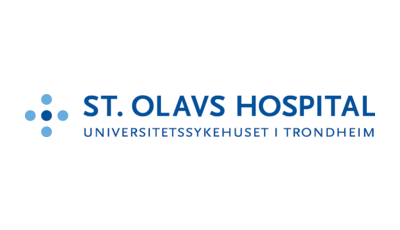
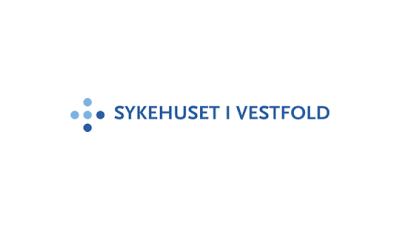
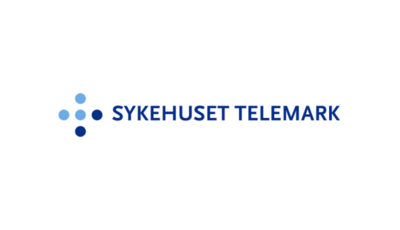
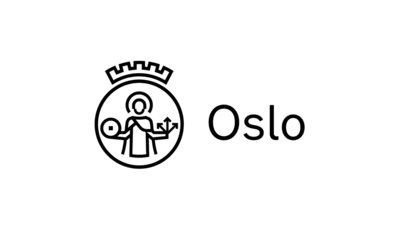
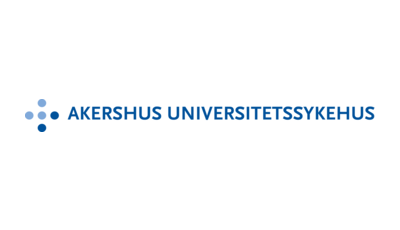
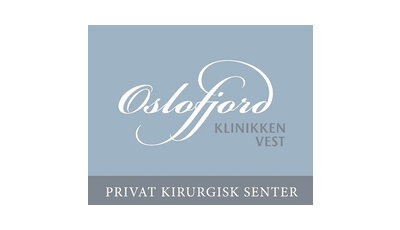

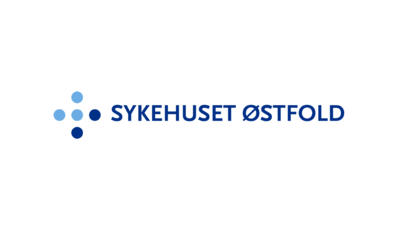
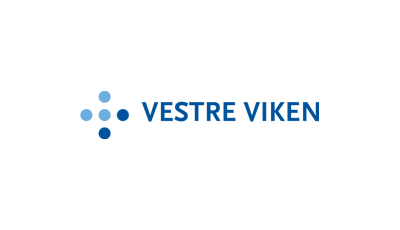
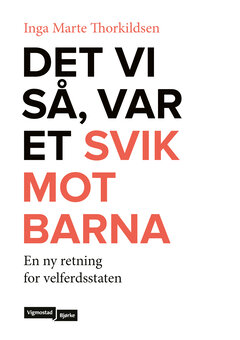
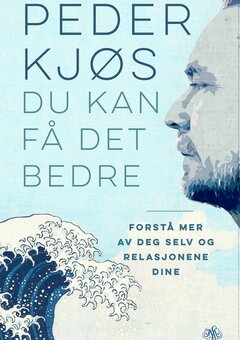
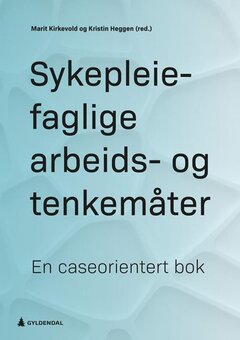
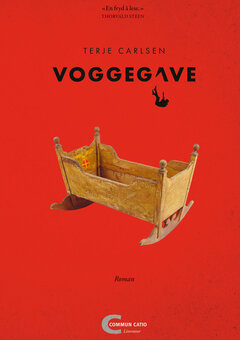
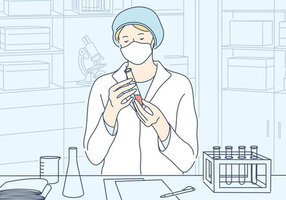

Comments